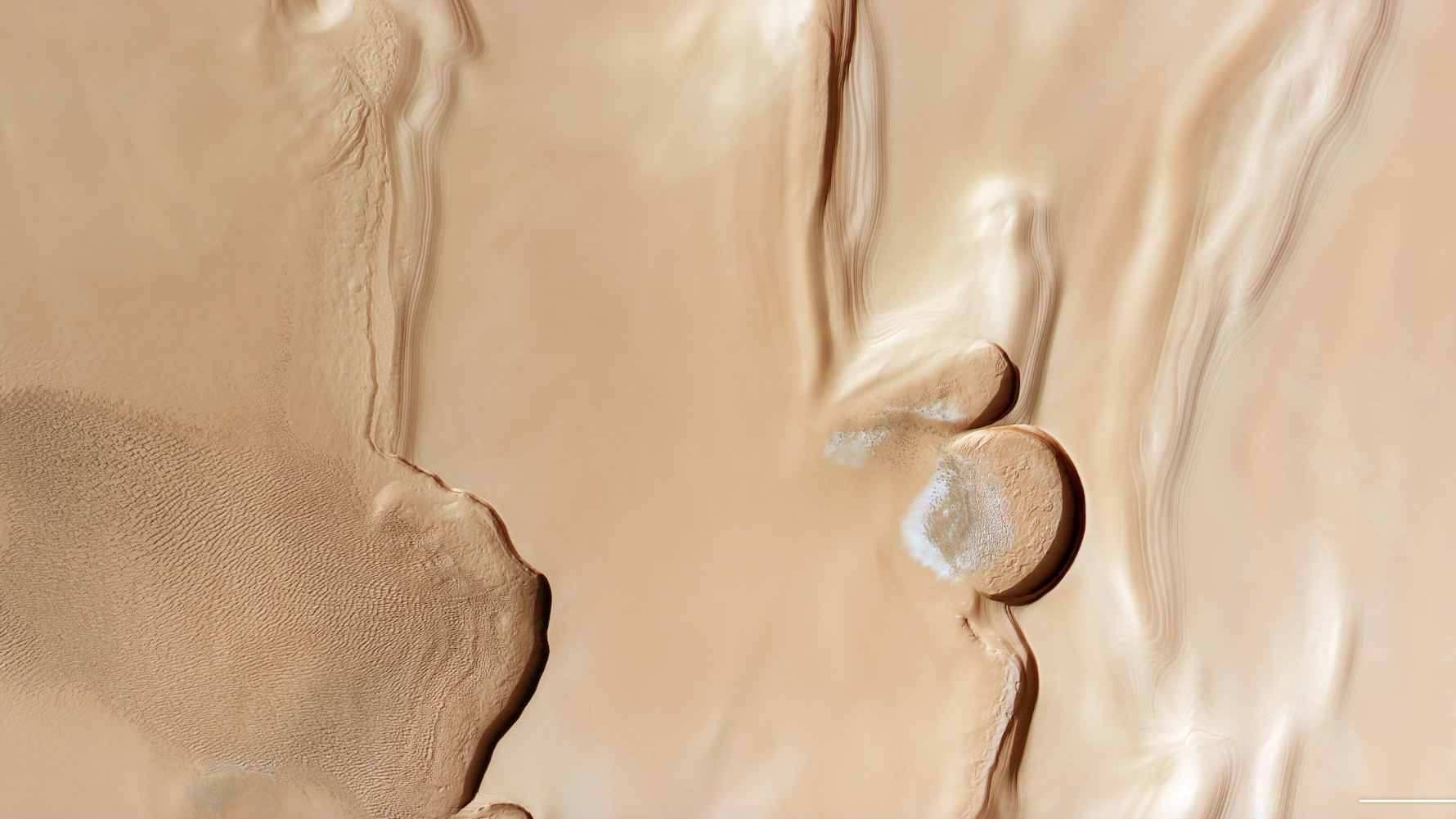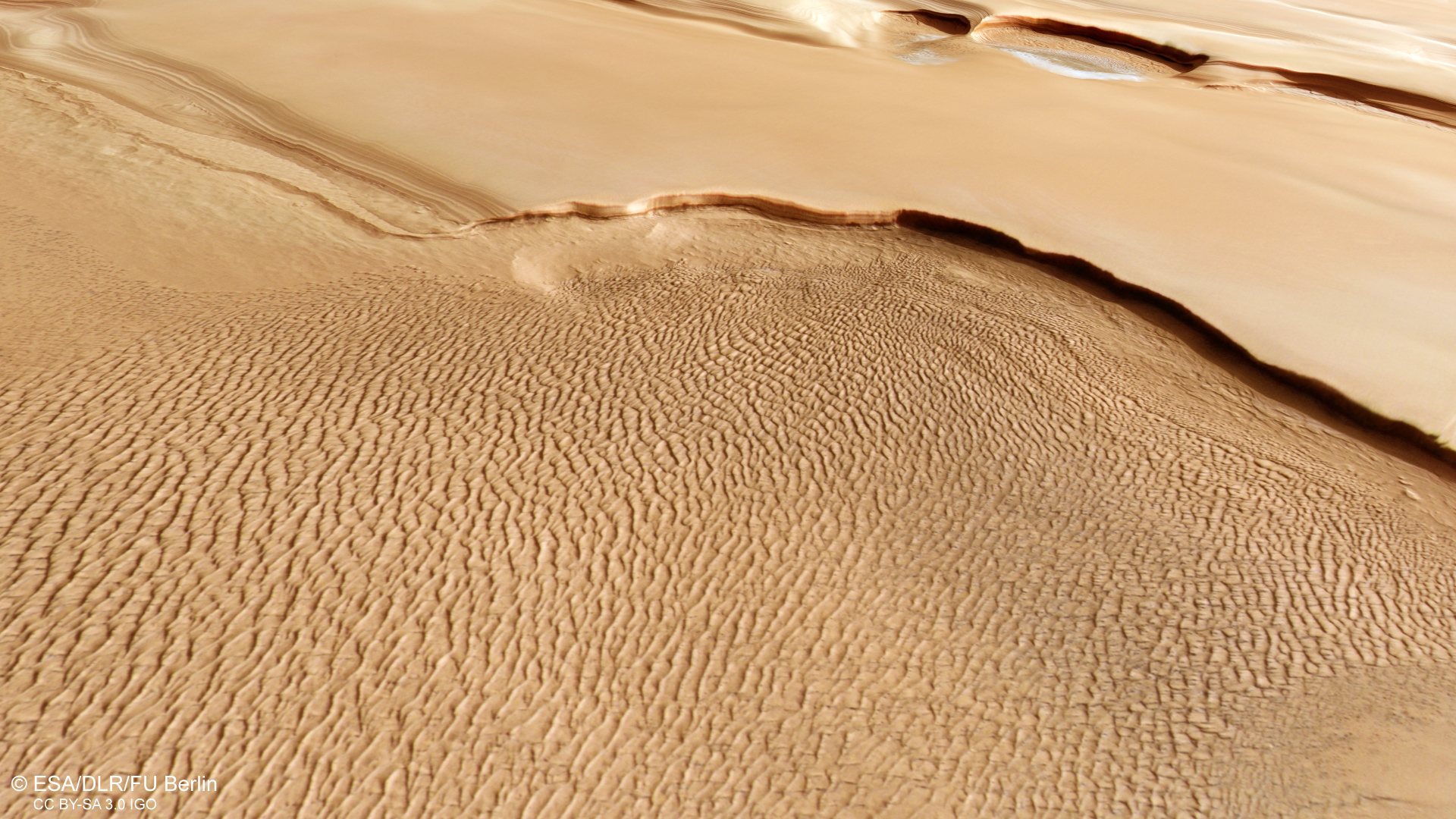
The Martian north polar region is a strange and fascinating place, even by the standards of its strange and fascinating planet.
There, the dust that coats the surface of Mars mixes with water ice. Layers upon layers of dust and ice stack miles deep, covering a region the size of France.
For much of the Martian year, this region is buried under a cap of frozen carbon dioxide, also known as dry ice. But when Martian summer comes, the dry ice disappears into the planet's atmosphere. And it was in the midst of summer that the European Space Agency's Mars Express orbiter captured a little slice of the north polar landscape.
Related: Mars: Everything you need to know about the Red Planet

The Mars Express image — which was captured on April 14, 2023 but just released last week — shows the frontier between two distinct regions. To the left is Olympia Planum, a vast expanse of sweeping sand dunes that appear as little wrinkles in a field of dust.
And on the other side is Planum Boreum, which includes the north pole itself, which is out of frame to the image's right. Planum Boreum is strikingly smooth — a sign that the surface is very young, largely untouched by the ravages of erosion and meteor impacts, ESA officials said in an image description. Indeed, Planum Boreum likely gets a yearly refresh every time the winter ice comes and goes.
This borderland is cut apart by crescent-shaped cliffs, the largest of them about 12 miles (20 kilometers) wide. These cliffs are the result of winds wearing away the surface. The cliffs are part of a spiral of troughs spindled across the entire north pole.
Mars Express has now been orbiting Mars for more than two decades, having arrived there on Dec. 25, 2003. The spacecraft has not only snapped a wealth of high-definition images of the Martian surface but also studied the Martian atmosphere and probed the planet's interior.







